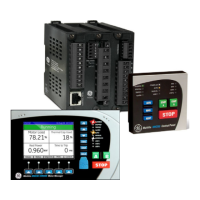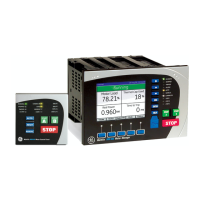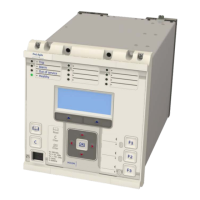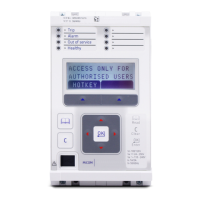0.25/Zone 1 reach = 0.25/(0.8 x line impedance)
0.25/Zone 2 reach = 0.25/(1.2 x line impedance)
1.5 x (0.25/Zone 4 reach) = 0.25/line impedance
In such cases, for Zone 1, the dominant Zone reach term is that of Zone 1 and the equation can be reduced to:
Sensitivity (Z1) = max (5%In, (0.25/(0.8 x line impedance)))
For lines with an impedance of less than 6.25 Ω the Zone 1 reach term dominates and the sensitivity is greater
than 5% In. Above this line impedance the sensitivity is 5% In.
Similarly, for Zone 2, the dominant Zone reach term is that of Zone 4 and the equation can be reduced to:
Sensitivity (Z2) = max (5%In, (0.25/line impedance))
For lines with an impedance of less than 5 Ω the Zone reach term dominates and the sensitivity is greater than 5%
In. Above this line impedance the sensitivity is 5% In.
In Advanced setting mode the same qualifications for distance zone minimum sensitivity as minimum sensitivity
should be applied to ensure distance element accuracy.
4.7
CAPACITOR VT APPLICATIONS
The device provides a setting for capacitor-coupled voltage transformer (CVT) applications. This setting is CVT
Filters and is found in the DISTANCE SETUP column. The default setting is Disabled which us used for
conventional wound voltage transformers. If CVTs are used you can set CVT Filters to either Passive, or Active
to reduce the effects of transient components caused by close up faults.
4.7.1
CVTS WITH PASSIVE SUPPRESSION OF FERRORESONANCE
Passive suppression to reduce the effects of transient components that could be caused by close up faults uses an
anti-resonance design and the resulting transient distortion is fairly small. Passively suppressed CVTs are
sometimes classed as type 2. In passive CVT applications, the effect on characteristic accuracy is generally
negligible for source to line impedance ratios of less than 30 (SIR < 30). However, with a high Source-to-Line
Impedance Ratio (SIR), it is advisable to set CVT Filters to Passive.
By setting CVT Filters to Passive, the protection can trip at sub-cycle speeds, unless the actual SIR is above that
which is set. If the SIR is estimated to be higher than the setting, the instantaneous operating time is increased by
about a quarter of a power frequency cycle. The protection estimates the SIR as the ratio of nominal rated voltage
Vn to the size of the comparator vector IZ (in volts):
SIR = Vn/IZ
where:
● Vn = Nominal phase to neutral voltage
● I = Fault current
● Z = Reach setting for the zone concerned
Therefore, for slower operation, I needs to be low, as restricted by a relatively weak infeed and Z needs to be small,
as for a short line.
4.7.2
CVTS WITH ACTIVE SUPPRESSION OF FERRORESONANCE
Active suppression to reduce the effects of transient components that could be caused by close up faults uses a
tuned L-C circuit in the CVT. The damping of transients is not as efficient as for passive suppression. Active
suppression CVTs are often called type 1 CVTs. In active CVT applications, to ensure reach point accuracy, the CVT
Filters setting should be set to Active. The protection varies according to the calculated source to line
impedance ratio SIR (= Vn / IZ).
P543i/P545i Chapter 7 - Distance Protection
P54x1i-TM-EN-1 173
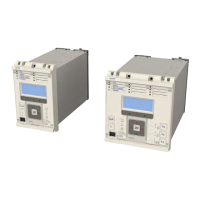
